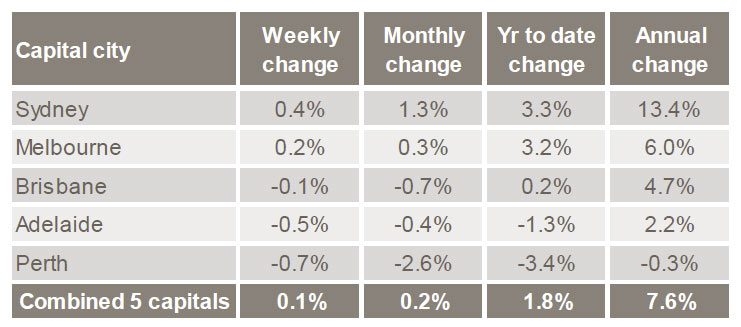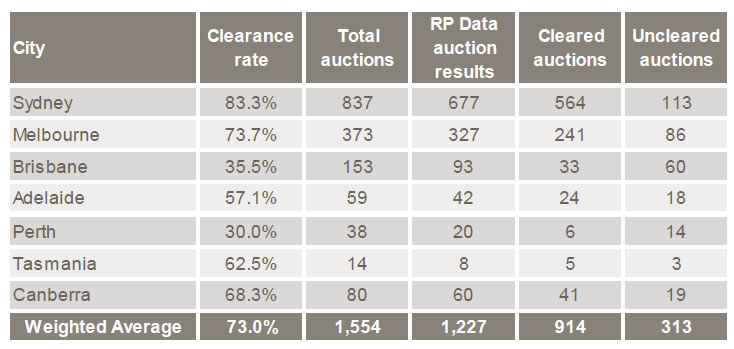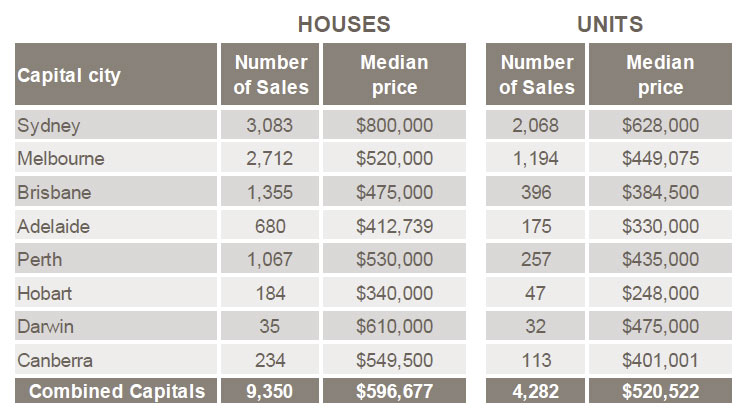The CoreLogic RP Data Market Summary to 8th March highlights the disparity between the Sydney market and other capital cities. For example, the monthly lift in prices was 1.3% in Sydney, compared with a combined capital city change of 0.2%. It should also sound a warning, if the London market is anything to go by.
 Auction clearance rates in Sydney were at 83.3%, compared with a weighted average of 73%, and half of all properties sold were in Sydney (677 out of 1,227).
Auction clearance rates in Sydney were at 83.3%, compared with a weighted average of 73%, and half of all properties sold were in Sydney (677 out of 1,227).
 The average house price in Sydney has now broken above $800,000, compared with a combined average of $596,677.
The average house price in Sydney has now broken above $800,000, compared with a combined average of $596,677.  A word of warning, parallels have been drawn between Sydney and the London property markets in recent time. So, its worth reflecting on this commentary relating to the London market.
A word of warning, parallels have been drawn between Sydney and the London property markets in recent time. So, its worth reflecting on this commentary relating to the London market.
Further evidence is emerging that the central London housing market bubble has burst and price falls are spreading throughout the rest of Greater London, the latest index suggests. Prime central London prices are still falling as the supply of properties rises and confidence in property as an investment ebbs away,’ according to the data from Home.co.uk. Central London locations dominate the latest list of biggest house price falls across the UK, with Walworth in the London Borough of Southwark seeing a 15% fall in average house prices between January 2014 and January 2015.
House prices in Belgravia fell by 10.3% over the same period and Cromwell Road in Kensington saw a slump of 8.3%. Of the 20 UK areas with the biggest annual fall in sales prices, 11 are in London. Landlords’ return on investment on central London properties is also falling. Of the 15 UK locations recording negative real % yield, which occurs when the value of the property depreciates by more than the annual rent, 12 are in central London.
The index shows that in January 2015, landlords with a property in Walworth recorded a negative real % yield of 11.3%, while in Belgravia the negative real % yield stood at 7.1%.
Central London flat prices are among the hardest hit. On average, the price of a flat fell by 9% in central London between January 2014 and January 2015. Over the same time, the number of flats for sale in central London has increased by 64%.
Since November 2013, the price of a typical flat in Belgravia has fallen 20%, from £1,995,000 to £1,600,000. A similar price correction has already spread into Islington, where the typical asking price of a flat has dropped 11% since March 2014. This represents a loss of £85,000 for flat buyers in Islington over the last 10 months.
There is further evidence that price falls are rippling out to more remote areas of Greater London and look set to spread further into the South East. The spectre of negative equity is looming large for recent buyers.
Further out in Greater London, Holloway flat prices peaked in May 2014 but have since dropped by 13%, while the typical time on market for flats in the area has more than doubled. Meanwhile, Muswell Hill in North London has seen flat prices fall 4% since October last year.
‘Optimism in the UK housing market is still riding high in the rest of the country, but it comes as a shock to many to learn that prices are?crumbling in the most expensive streets in London,’ said Doug Shephard, Home.co.uk director.
‘These price movements may soon have a knock-on effect for the rest of Greater London and, later, the Home Counties,’ he added, pointing out that prices in central London went up too far, too fast during 2012 and 2013.
‘In a synthetic property boom and bust such as London has experienced, on account of ultra-low interest rates and other stimulus measures, it is hard to imagine any possible remedial action on the part of the government. Prices this time may simply have to fall back to a more natural equilibrium,’ he added.

One thought on “Hot Sydney Market Distorts National Property Picture”